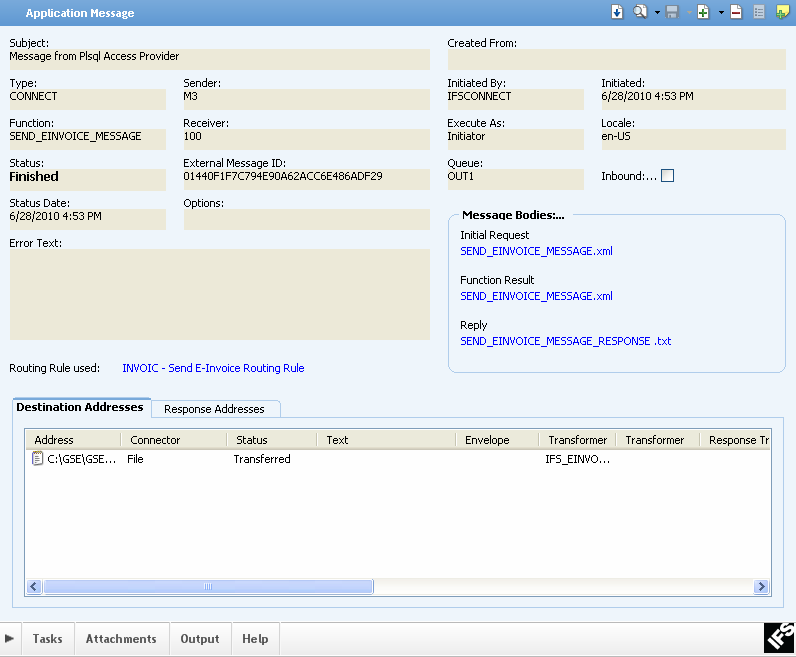
jhmase: The page contains a lot of information that should not be in an overview page.
Message queues are the place holders of Application Messages. IFS Connect Message Queues are used for different purposes, such as:
Some default queues are created at the initialization process and are used by the IFS Connect Framework for the above purposes while any new queue can be created by using the Message Queue feature in IFS Administration Client.
Those default message queues are
Note: Any message that should be deleted permanently should be moved to the Trashcan Queue so that batch server can identify and remove it.
Application message is the data structure used in IFS Connect Framework. Any application message consists of three major parts:

General information that is relevant to a particular application message is defined in the header part of the application message. The header part is used to specify the application message itself.
The Address list of an application message describes the associated destination addresses
and response addresses.
The difference between these two types are, contents of a message are delivered
to destination addresses and response addresses are used to send asynchronous responses
whether the message has been successfully processed or not. Both of these address
types share the same format.
An entry in the Address list describes:
An application message can contain initial request, function result and reply bodies. Inbound messages do not contain function result. Initial request body consists of XML data to be used in processing the message. Function result consist the result of the initial request after processed by the BizAPI. A reply body consists the data sent in a reply message. This may be XML, PDF, Text or Binary data. The body is always stored in original format.